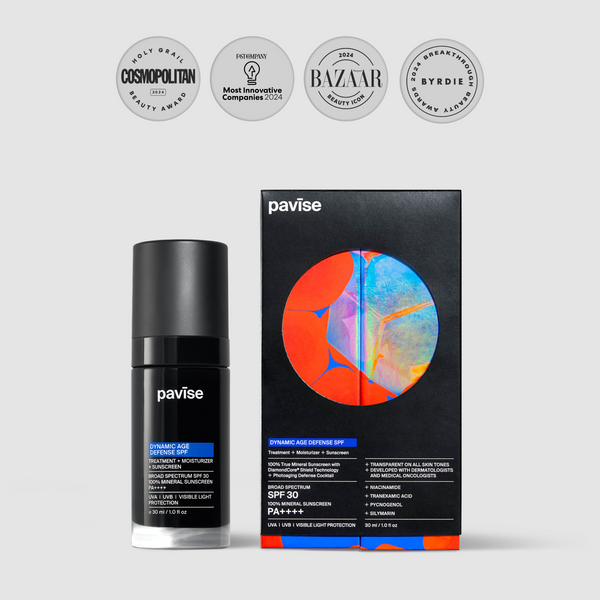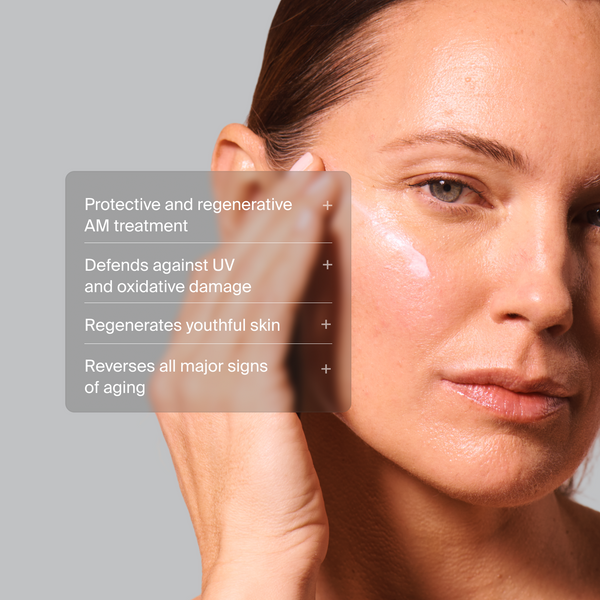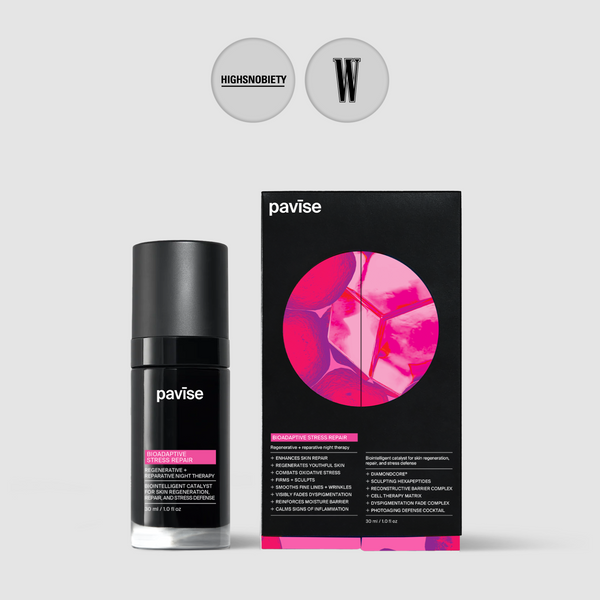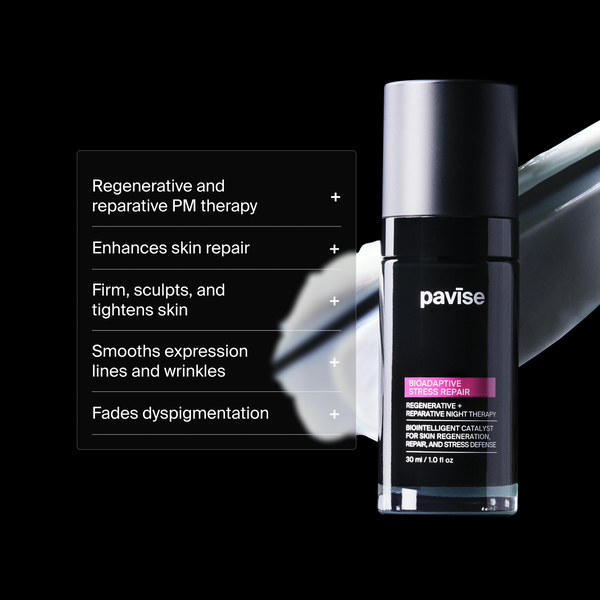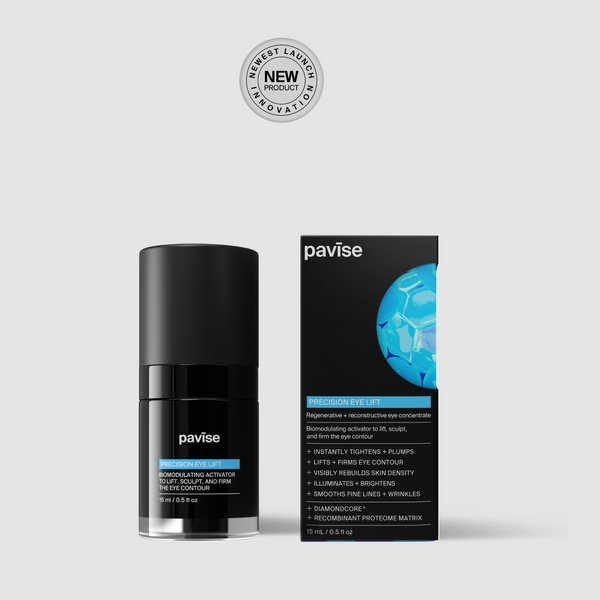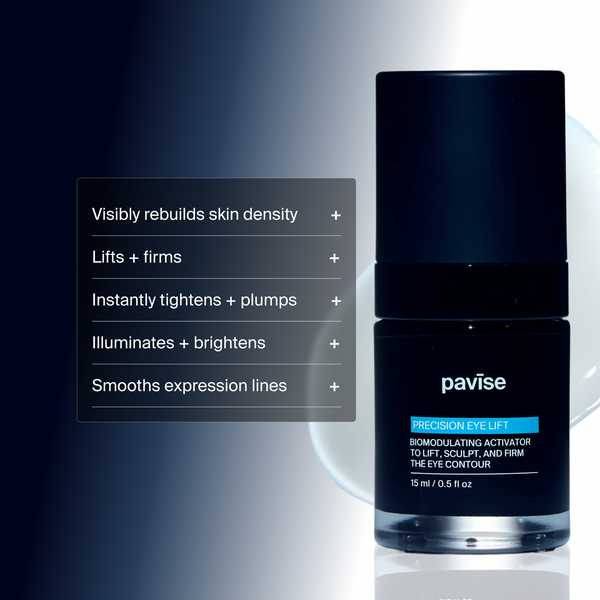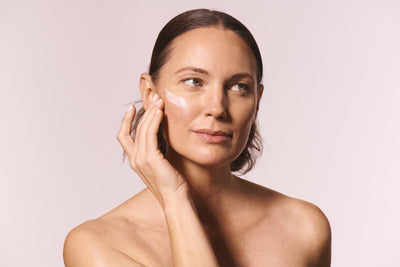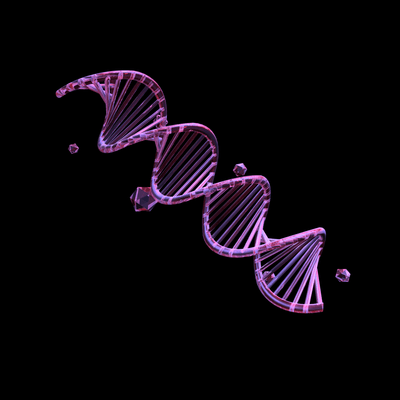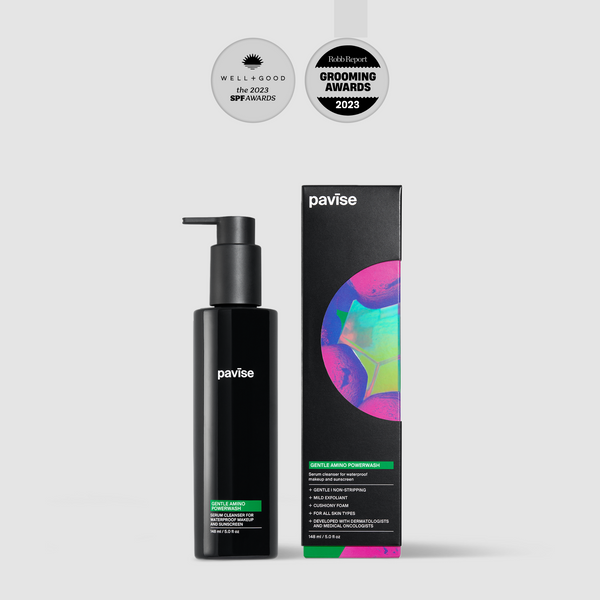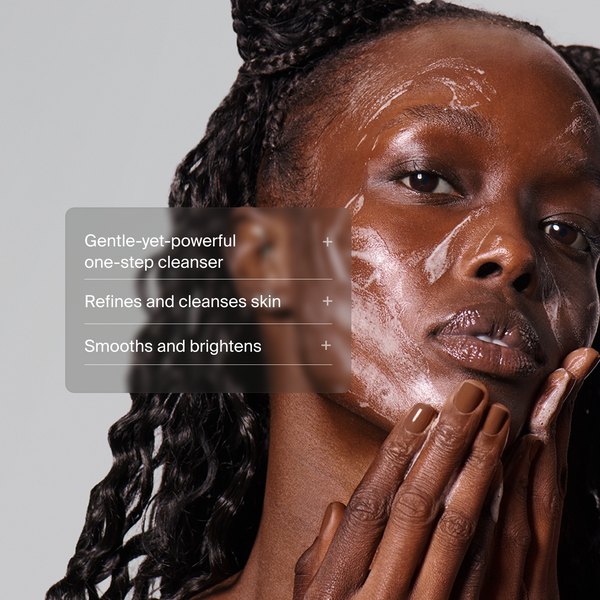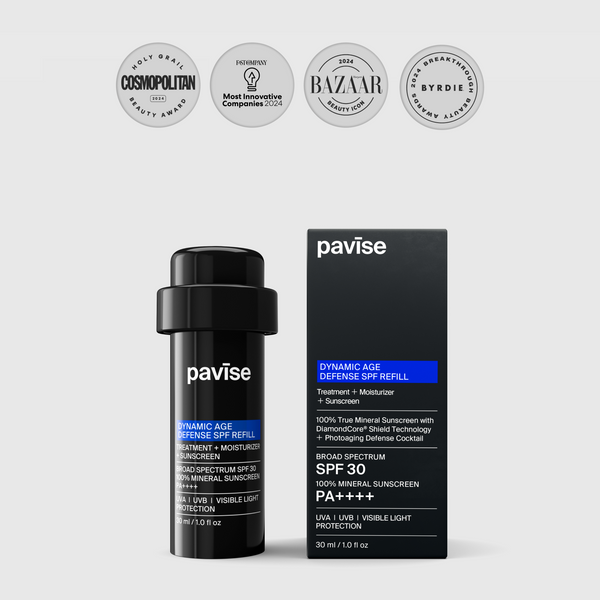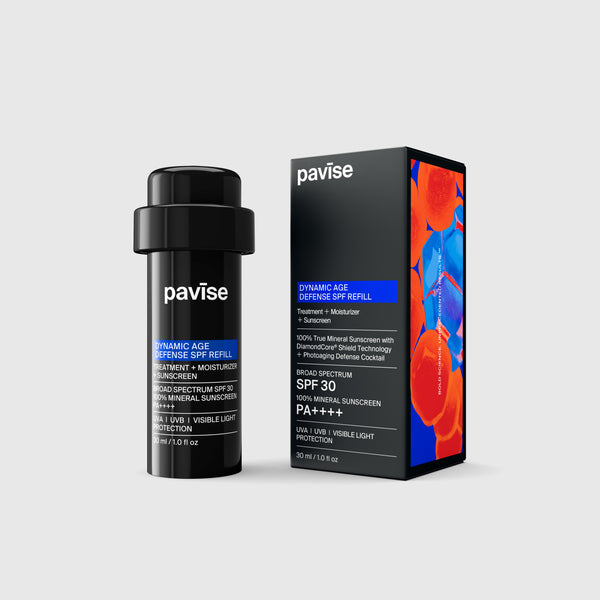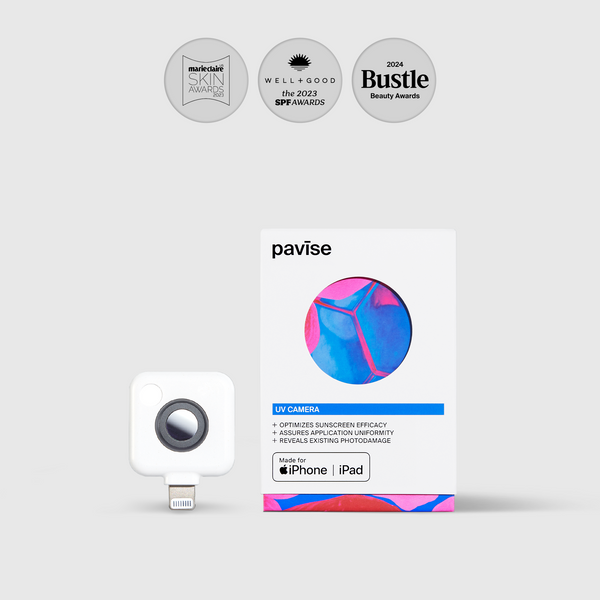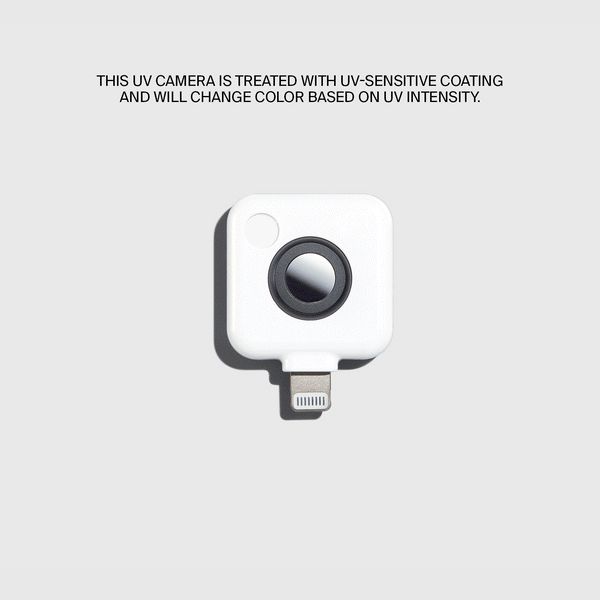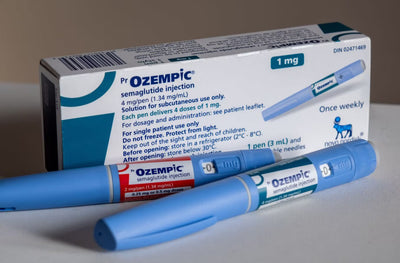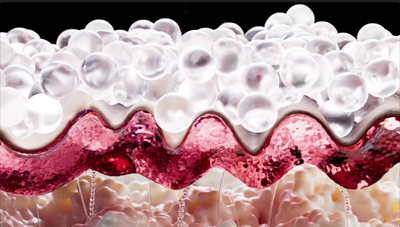WHY RISING TEMPERATURES MEAN RISING AGING RISKS
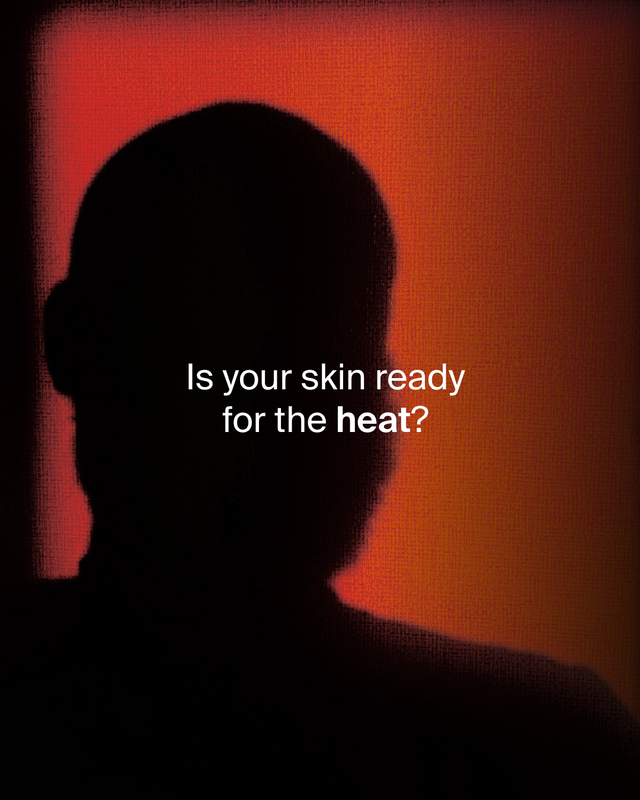
What you need to know
Prolonged heat exposure, from rising global temperatures to intense sun radiation, can accelerate aging by altering DNA methylation, breaking down collagen, increasing pigmentation, and generating oxidative stress. Preventing this damage involves staying cool, reducing environmental impact, and using skincare that supports collagen production, reduces inflammation, and protects against both UV and heat-induced stress.
When you think of the sun, “hot” and “bright” are probably the first words that come to mind. Most sun protection focuses on shielding us from UV radiation with it being the most well-known cause of skin damage. Heat from the sun can also quietly accelerate the aging process, and it is a risk that is becoming harder to ignore. Research shows that prolonged exposure to high temperatures can speed up biological aging, affecting the skin at both the molecular and visible levels. With global warming driving record-breaking heat year after year, understanding and protecting against heat-induced damage has never been more important.
Long-term heat exposure can cause epigenetic alterations
One sign of heat accelerating aging is the change in epigenetic age. Epigenetic age is the molecular biomarker used to determine an individual’s biological age in their genome1. One of the ways that epigenetic age changes is through a difference in DNA methylation patterns. DNA methylation is important because it controls different pathways in cellular functions. When DNA is methylated, it changes which genes are expressed, controlling the proteins being produced in the cell. Severe heat stress can affect this process by changing when and where DNA is typically methylated. A population study demonstrated that under long term heat exposure, the DNA methylation patterns change such that epigenetic age is accelerated1. They examined the correlation between short-, mid-, and long-term heat exposure to epigenetic age by taking blood samples and comparing the population genome to daily climate data in participant’s location. From their study, they concluded that there was a consistent association between epigenetic aging and long-term heat exposure1. This means that the daily temperature increase we have been experiencing due to global warming is biologically aging humans.

Association between ambient outdoor heat and accelerated epigenetic aging. Data provided by Choi et al.
Heat can lead to aging effects similar to UV induced aging
In addition to heat caused by global warming, we also experience heat due to sun exposure. The radiation from the sun includes UV radiation, IR radiation, and visible light. When the skin is exposed to IR radiation, it absorbs the radiation and can heat up to 40 ⸰C2. This heat can then cause many types of damage. One form of damage is a disease called erythema ab igne (EAI) which is a disease caused by chronic heat exposure that results in hyperpigmentation and elastosis2,3. Under excessive heat exposure, paracrine factors in skin cells can become overexpressed. Paracrine factors act as a form of communication between different types of cells, so when there are too many being produced in skin cells, other cell behavior is affected. One of the other cells affected by paracrine factors are melanocytes which are responsible for producing melanin. When there is long-term heat exposure that upregulates these paracrine factors, more melanin is then produced by melanocytes which results in pigmentation on the skin3.

Representative images of heat-exposed skin tissue at various temperatures. Image provided by Zhang L. et al
Heat exposure can also lead to extracellular matrix (ECM) damage and oxidative damage2. Studies have shown that matrix metalloproteinases (MMPs), specifically MMP-1, MMP-3, and MMP-12, are upregulated under intense heat2. Upregulated MMP levels cause degradation of ECM proteins such as collagen and elastin. This causes the skin to become more wrinkled and lose its elasticity. Prolonged heat exposure can also lead to oxidative damage through the production of reactive oxygen species (ROS)2. When ROS are produced, they can cause damage to DNA, resulting in cellular dysfunction. Improperly functioning cells contribute to aging which is why ROS can be so damaging.
How can we prevent heat induced aging?
There are a few ways that aging caused by long-term heat exposure can be treated. The main sources of heat that we experience are due to prolonged sun exposure and global warming. To avoid overheating from sun exposure, it is as simple as staying in the shade on a hot, sunny day. This helps prevent any harm that may be caused by direct sun exposure, and it keeps you cooler to protect yourself from heat stroke and heat damage.
Global warming is a much more difficult challenge to solve. The best that we can do to combat this is to do our part in keeping our planet as sustainable as possible. On your end this can be conserving energy and recycling. While individual homes do their part to maintain a sustainable planet, researchers are actively looking for sustainable solutions to combat climate change and damaging greenhouse gas emissions.
Finally, there are direct ways to protect and heal your skin from damage due to excessive heat. The best solution is to use products that accelerate collagen production to combat MMPs, reduce inflammation, protect against UV, and scavenge the free radicals that cause DNA damage. Our preferred solution that achieves all of this is Pavise Dynamic Age Defense. This product contains DiamondCore® technology which is the main source of protection. DiamondCore® has been proven to increase collagen synthesis by 70% and reduce 80% of free radicals produced by sun damage4. In doing so, wrinkles can be eliminated by repairing the ECM, and DNA damage and inflammation can be reduced by eliminating ROS.

While UV rays often take the spotlight in discussions of sun-related skin damage, heat is an equally important and increasingly relevant factor in skin aging. From accelerating biological age through epigenetic changes to triggering pigmentation, collagen breakdown, and oxidative stress, heat quietly but powerfully contributes to visible and invisible signs of aging. Protecting your skin means taking a holistic approach: staying cool, practicing sustainable habits, and using targeted skincare that addresses both UV and heat-induced damage. By being proactive now, you can help your skin stay resilient, healthy, and radiant in the face of rising temperatures.
References
1. Choi EY, Ailshire JA. Ambient outdoor heat and accelerated epigenetic aging among older adults in the US. Science Advances. 2025;11(9). doi:https://doi.org/10.1126/sciadv.adr0616
2. Cho S, Shin MH, Kim YK, et al. Effects of infrared radiation and heat on human skin aging in vivo. The journal of investigative dermatology Symposium proceedings. 2009;14(1):15-19. doi:https://doi.org/10.1038/jidsymp.2009.7
3. Zhang L, Zeng H, Jiang L, et al. Heat promotes melanogenesis by increasing the paracrine effects in keratinocytes via the TRPV3/Ca2+/Hh signaling pathway. iScience. 2023;26(5):106749. doi:https://doi.org/10.1016/j.isci.2023.106749
4. Zhang XD, Teng C, Bai X, et al. Enhanced skin regeneration and therapeutic delivery using novel diamond‐augmented zinc oxide. Journal of Cosmetic Dermatology. Published online July 31, 2024. doi:https://doi.org/10.1111/jocd.16508
By Elia Rodriguez - Updated September 24, 2025
